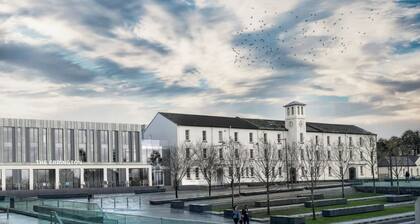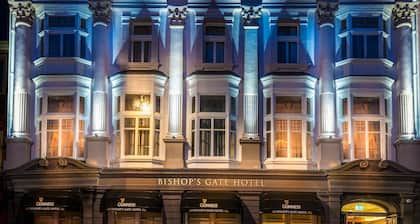The Derry City Walls are among the best examples in Europe of a fortified commune. Derry was one of the last cities in Europe to build a protective wall, which is well preserved today. Walk the walls and encounter churches, cannons and shops along the way.
Take a guided tour of the walls to learn about their features. The walls cover a circumference of about 1 mile (1.6 kilometers) with a height that varies between 12 feet (4 meters) and 35 feet (11 meters). Visit the four original gates that join the walls, including the triumphant arch of Bishop’s Gate. Three more gates have been added in the last few centuries.
Enjoy the views of the city and its quaint Renaissance-style streets from the vantage point of the walls. Some parts of the ramparts rise high above the city center. Admire the robustness of the structure, which makes Derry the only surviving walled city in Ireland. Appreciate the historical features that decorate the walls, such as the 24 restored cannons that provided protection for the city. Among the highlights is the impressive Roaring Meg cannon, which played a major role in the Siege of Derry in 1689.
Gaze up from the city center at the walls that surround you. They are a prominent part of the Derry cityscape.
Learn about the origins of the structure. The walls were built between 1614 and 1619. Despite several attacks, the fortifications were never breached. The thick barriers are made from earth, lime and stone.
Information and tours are available from the Tourist Information Centre near the River Foyle. Visit the walls, which remain open to the public at all times, for free.
The Derry City Walls surround the central portion of the city. Enter the city through one of the original 17th-century portals, such as Butcher’s Gate in the north or Ferryquay Gate on the opposite side.









